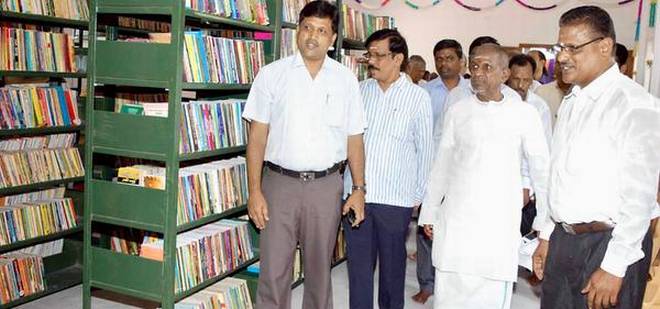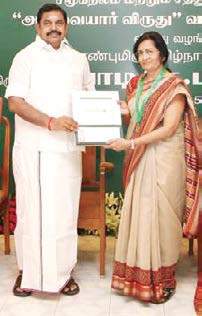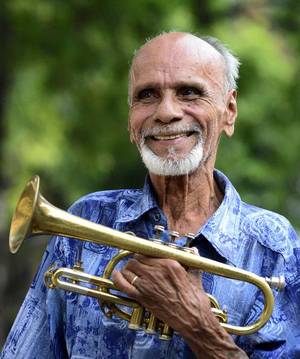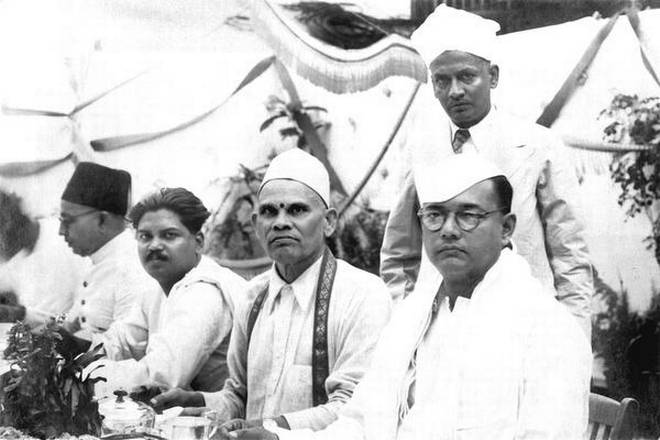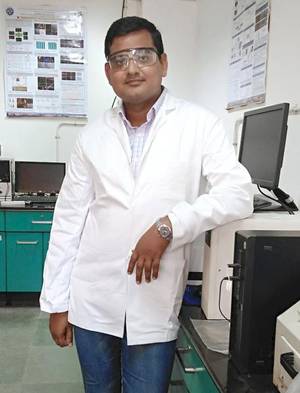
This could be used in applications such as tunable laser, LEDs and white light display
Dr. Vikram Singh, former research scholar in the Department of Chemistry, IIT Madras won the BIRAC Gandhian Young Technological Innovation (GYTI) Award 2017 for his work on producing white light emission using natural extracts.
Dr. Singh and Prof. Ashok Mishra from the Department of Chemistry, IIT Madras used a mixture of two natural extracts — red pomegranate and turmeric — to produce white light emission. The researchers used a simple and environment-friendly procedure to extract dyes from pomegranate and turmeric.
While polyphenols and anthocyanins present in red pomegranate emit at blue and orange-red regions of the wavelength respectively, curcumin from turmeric emit at the green region of the wavelength. White light emission is produced when red, blue and green mix together. This is probably the first time white light emission has been generated using low-cost, edible natural dyes. The results were published in the journal Scientific Reports.
“We had to mix the two extracts in a particular ratio to get white light,” says Dr. Singh, the first author of the paper; he is currently at Lucknow’s CSIR-Central Drug Research Institute (CDRI). By changing the concentration of the two extracts the researchers were able to get different colour temperature (tunability).
“When we mix the two extracts and irradiate it with UV radiation at 380 nm, we observed energy transfer (FRET mechanism) taking place from polyphenols to curcumin to anthocyanins, which helps to get perfect white light emission,” says Dr. Singh. For FRET mechanism to take place there must be spectral overlap between the donor and acceptor.
Energy transfer
In this case, there is a perfect overlap of emission of polyphenols with absorption by curcumin so the energy from polyphenols is transferred to curcumin. Since there is also a perfect overlap of emission of curcumin with absorption by anthocyanin, the energy of curcumin is transferred to anthocyanin.
As a result of this energy transfer from one dye to the other, when the extract is irradiated with UV light at 380 nm (blue region of the wavelength), the polyphenols emit in the blue region of the wavelength and transfers its energy to curcumin. The excited curcumin emits in the green region of the wavelength and transfers its energy to anthocyanin, which emits light in the red region of the wavelength.
“Because of the energy transfer, even if you excite in the blue wavelength we were able to get appropriate intensity distribution across the visual wavelength,” says Prof. Mishra, who is the corresponding author of the paper.
Without turmeric
Taking the work further, the duo produced carbon nanoparticles using pomegranate and to their surprise it was producing fairly green emission. So instead of using turmeric to get green wavelength, the researchers used carbon nanoparticles made from pomegranate extract. “We could get white emission, though it is not as white as when we use turmeric. It’s slightly bluish but well within the white zone,” says Prof. Mishra. “It is an attractive to use a single plant source to create white light emission.” The principle by which the pomegranate extract and carbon nanoparticles made from the extract is the same as in the case when pomegranate and turmeric extracts were used. The results were published in the Journal of Materials Chemistry C.
Though this natural mixture of dyes can be used in a wide variety of applications such as tunable laser, LEDs, white light display, much work needs to be done in terms of photostability and chemical stability before it becomes ready for translation. Biosystems have an inherent tendency to breakdown and so this has to be addressed.
source: http://www.thehindu.com / The Hindu / Home> Sci-Tech> Science / by R. Prasad / May 06th, 2017
